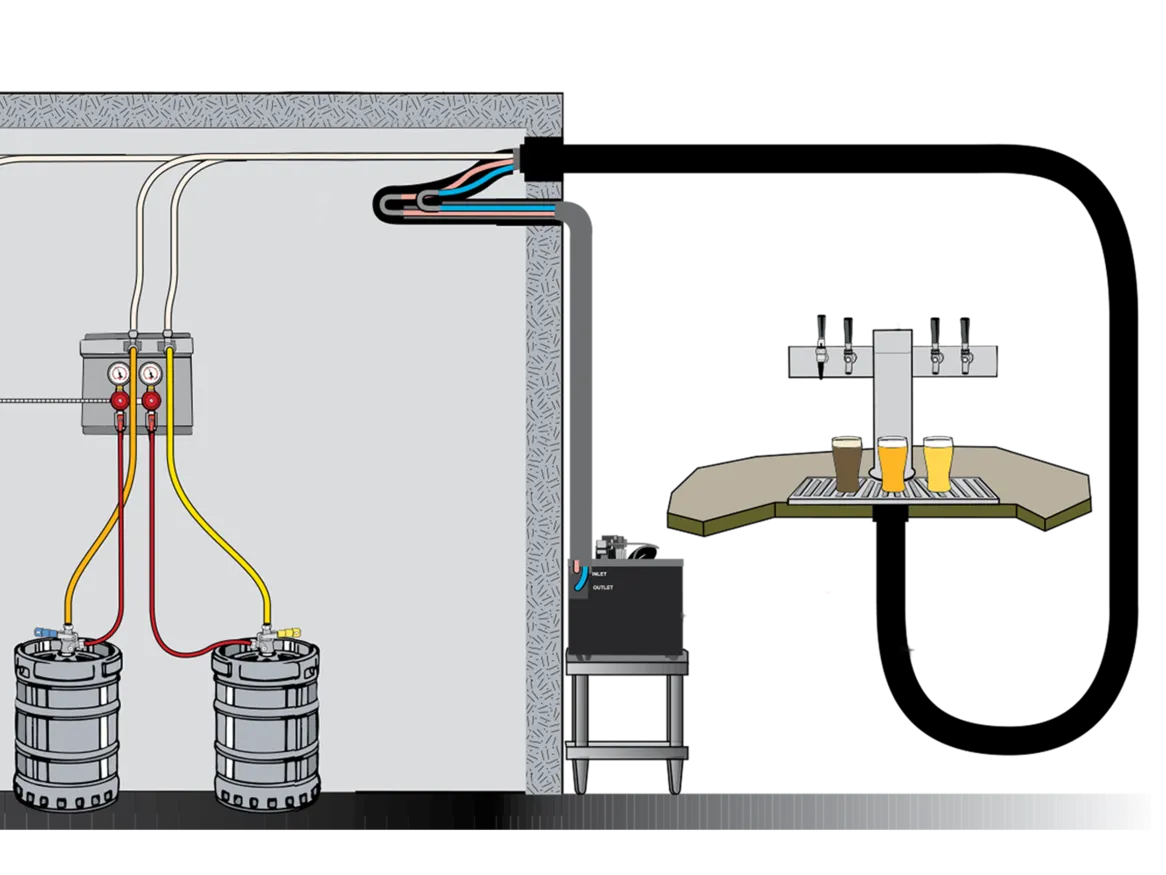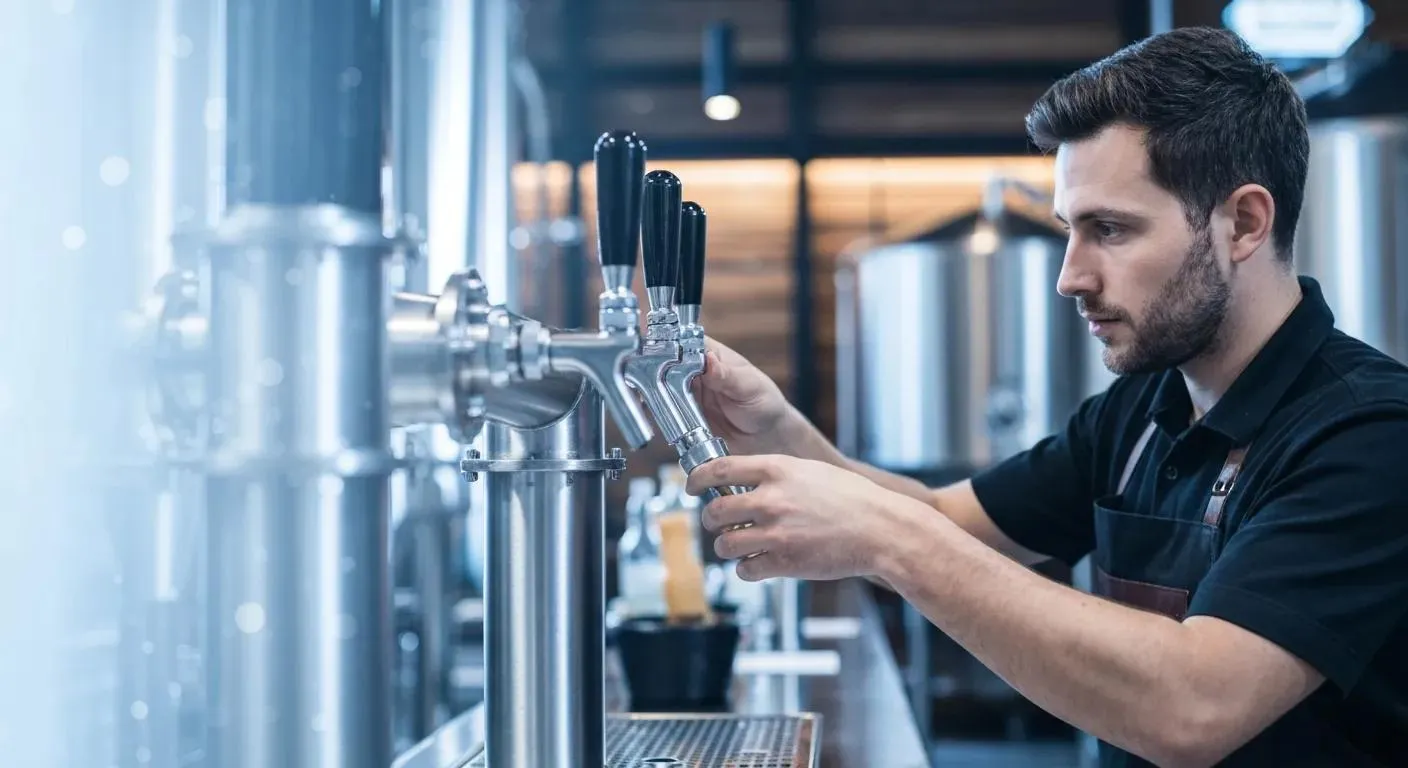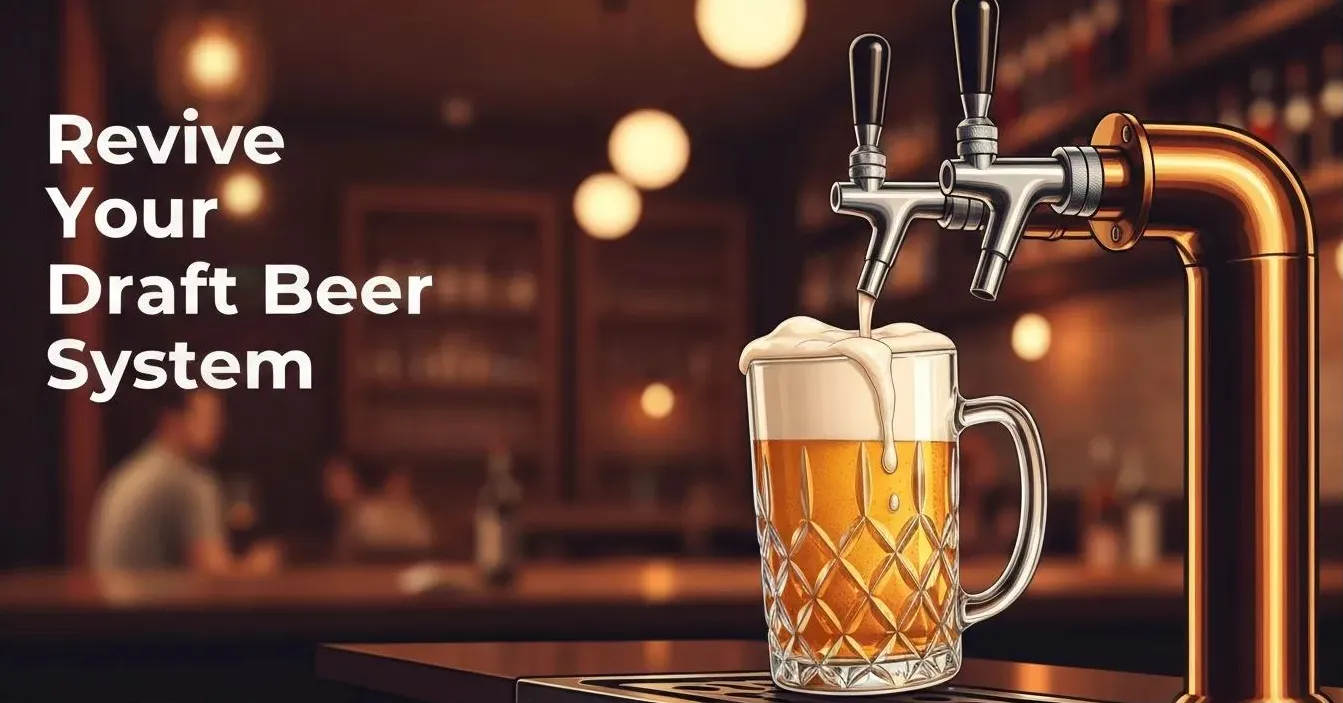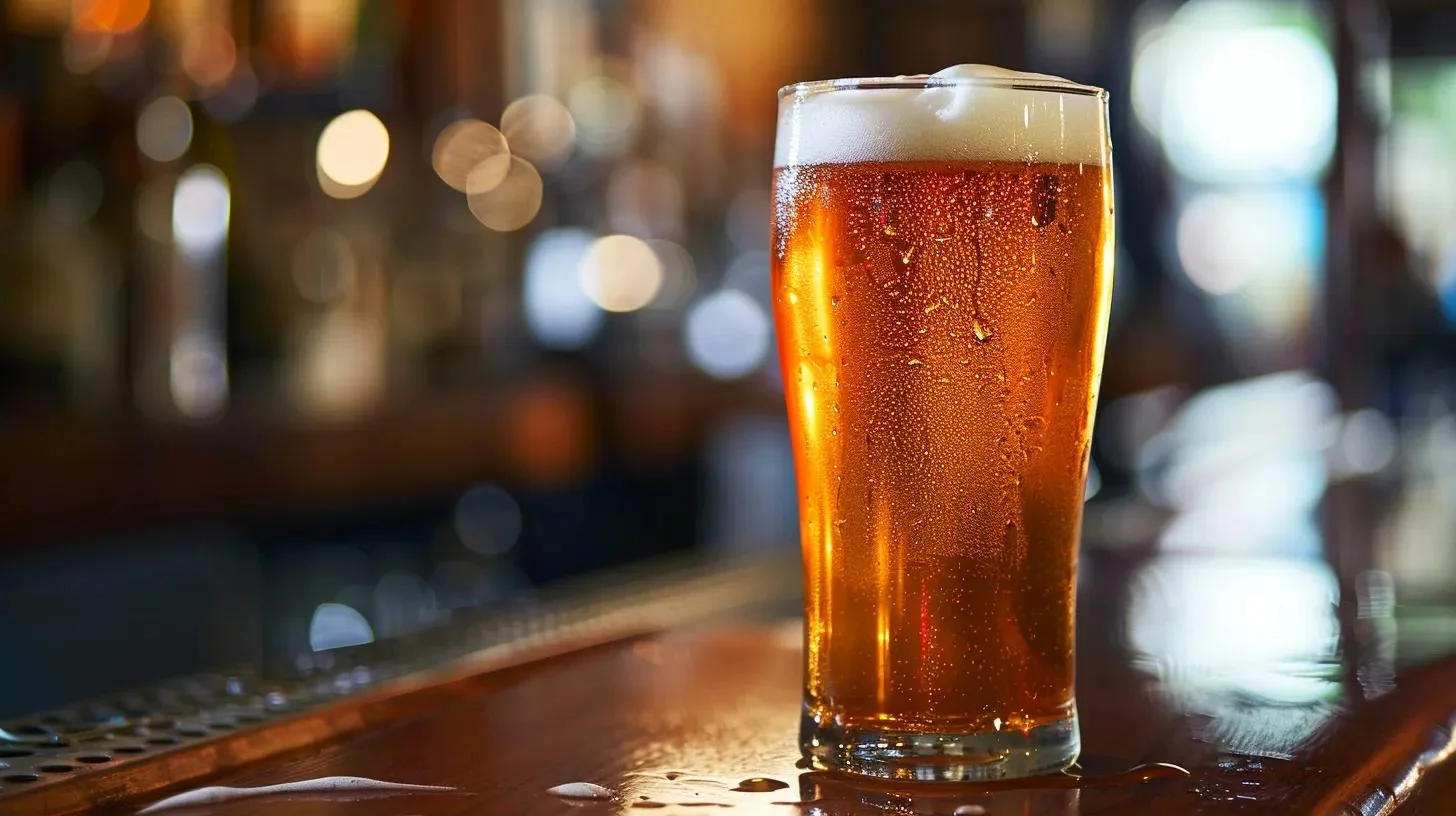Draft Dispensing Equipment: Essentials for Perfectly Poured Product

The evolution and sophistication of draft dispensing equipment have transformed how beverages, particularly beer, are served across various settings. Draft systems serve as the cornerstone of a successful beverage program. They support the delivery of high-quality, fresh-tasting drinks that appeal to the discerning palates of customers.
With an array of components, including keg couplers, gas regulators, and tap handles, these systems are engineered to dispense beverages directly from the keg in a controlled and efficient manner.
Maintaining a draft system requires attention to design, installation, and operational considerations to ensure optimal performance and customer satisfaction.
Innovations in draft technology continue to enhance the user experience with features aimed at preserving the drink's flavor, temperature, and carbonation from the first pour to the last. As establishments and enthusiasts alike seek to elevate the beverage experience, draft dispensing remains a dynamic field. Ongoing developments in equipment and accessories open up new possibilities for service and enjoyment.
Key Takeaways
- Draft systems are integral for providing quality beverage service.
- Proper maintenance and operation of equipment are vital.
- Technological advancements enhance dispensing experiences.
Understanding Draft Dispensing
To appreciate the craft of serving the perfect pint, one must first recognize the intricacies of a draft beer system. The design and components built in each of these systems are pivotal in ensuring the optimal delivery of draft beer to the glass.
Components of a Draft Beer System
Draft beer systems consist of several key parts, each crucial for precise and quality beer dispensing.
At the heart of the system is the keg, where the beer is stored under pressure. From the keg, the CO2 tank provides the necessary pressure to push the beer through the beer lines.
These lines are often connected to a keg coupler that taps into the keg. Moving the draft beer systems along, the draft beer tower is where the beverage finally exits the system through the faucet and into the glass.
Proper temperature is maintained by the refrigeration unit, and the regulators ensure that the correct pressure is applied for a balanced beer flow.
The intricate design of a draft beer system is engineered to preserve the beer's integrity from keg to glass.
Types of Draft Dispensing Systems
There are primarily three types of cold draft beer dispensing systems, each tailored to different serving environments and design considerations:
- Direct Draw Systems: Ideal for small-scale settings, these systems have the keg located directly below the dispensing tower, as seen in kegerators.
- Air-Cooled Systems: Suited for longer distances, they cool the beer line that runs from the keg to the tap usually with a fan.
- Glycol-Cooled Long Draw Systems: Perfect for extensive runs, they use a chilled glycol solution to preserve the beer's temperature from keg to faucet.

Each type ensures that the draft bottle of beer maintains the correct temperature and carbonation levels up to the point of dispensing, influencing the quality and taste.
Draft Beer System Equipment
Essential to any draft beer system are the components that ensure the reliable and consistent delivery of beer from keg to glass. Each piece of equipment plays a specific role in maintaining the quality and taste of draft beer.
Kegerators and Direct Draw Systems
Kegerators are stand-alone refrigeration units that typically house one or more kegs and use direct draw systems to serve beer. Perfect for both home and commercial use, they are compact and efficient, with all necessary equipment and kegs being housed within the unit, including a C02 tank and keg coupler.
Glycol and Air Cooled Systems
For establishments requiring longer runs from keg to tap, there are glycol and air-cooled systems.
Glycol-cooled systems use a mixture of glycol and water to cool the lines from an external chiller to the beer faucets, while air-cooled systems push cold air alongside the beer lines to maintain the proper temperature.

Faucets, Shanks, and Couplers
The point of dispense is critical and involves several key components:
- Beer faucets control the flow of beer being dispensed.
- Shanks connect the faucet to the refrigeration system and help stabilize the tap's temperature.
- Keg couplers act as a valve that allows beer to flow from the keg and are specific to the keg's type.

Design and Installation
Careful consideration of design and installation is crucial for an efficient draft system that meets specific needs. Both the aesthetic and functional aspects should harmonize to create a seamless experience.
Custom Draft System Design
The design of a draft beer system is often tailored to the unique requirements of an establishment. Designers must account for aspects like the venue's size, the variety of beers offered, and the desired ambiance.
Custom solutions may include anything from a basic setup to an elaborate, multi-tap system. By minimizing the system’s compact footprint, designers can maximize the use of space while ensuring functionality.

Installation Process and Setup
Installation of draft beer equipment involves precise steps to ensure optimal performance and preserve beer quality.
The setup usually starts with configuring the draft tower, followed by the installation of lines, regulators, and cooling systems.
Installers must ensure that the system maintains a consistent temperature, as fluctuations can affect beer quality.
Operational Considerations
In maintaining an efficient draft beer system, operators need to precisely manage temperature and pressure, ensure thorough maintenance and cleaning, and be adept at troubleshooting common issues. These factors are paramount for a smooth operation and optimal performance of the system.
Temperature and Pressure Control
To guarantee beer is dispensed at its best, regulating temperature and pressure is essential.
An ideal temperature for most ales and lagers is between 36-38°F.
Consistent pressure must also be maintained to counter the gravity and flow rate of beer. This ensures carbonation levels remain stable and prevents beer from becoming too foamy or flat.

Low-pressure problems can result in poor dispensing and should be addressed promptly.
Maintenance and Cleaning
Regular maintenance and cleaning are crucial for the longevity of draft beer systems.
Cleaning should be performed at least every two weeks to prevent buildup and bacterial growth which can alter the taste of the beer.
A typical cleaning regimen includes flushing the lines with a specialized cleaning solution, rinsing thoroughly, and checking for any parts that need servicing or replacement.

Troubleshooting Common Issues
Operators must be equipped to handle common challenges that can impact a draft beer system’s efficacy.
This includes identifying symptoms of undue wear and tear, leaks in the system, or inconsistencies in beer quality.
Understanding how to rectify issues related to temperature fluctuations, pressure variances, or maintenance lapses can help minimize downtime and sustain the overall quality of the dispensed beer.
Expanded Applications of Draft Systems
Draft systems are not limited to just dispensing beer; they have evolved to serve a variety of beverages with efficiency and style. Here we explore diverse applications within industries and contexts, showcasing their adaptability and functionality.
Wine, Cocktails, and Non-Alcoholic Offerings
Wine on tap is gaining popularity in establishments looking for ease of serving wine and maintaining product freshness.
Similarly, cocktails can be premixed and delivered through draft systems, streamlining service during peak hours.
For those seeking alternatives to coffee, kombucha, and seltzers are excellent non-alcoholic options that benefit from the precise carbonation control of draft systems.

Commercial and Restaurant Integration
Within restaurants, a commercial draft beer system serves as the cornerstone, offering a range of craft beers efficiently.
These systems are now integrating wine and even coffee, expanding their beverage portfolio and maximizing their utility in commercial spaces.
Event and Mobile Dispensing Solutions
For events, jockey boxes are a versatile solution, enabling the portable dispensing of chilled beverages, from craft beers to artisanal cocktails.
These mobile units can be seen at outdoor festivals, weddings, and corporate gatherings, providing quality beverage service anywhere.

Enhancements and Accessories
Upgrading draft dispensing systems can significantly improve the functionality and aesthetic appeal of beverage service, catering to both operational efficiency and customer satisfaction.
Drip Trays and Cleanliness Accessories
Drip Trays are essential for maintaining a clean dispensing area, and capturing spills and overflow.
The range of options varies from simple, functional designs to sophisticated models with flush-mount installations and drainage systems. They ensure that the service area remains hygienic and easy to clean.
Enhancing a beer tap system also includes using sanitation kits to keep beer lines pristine, ensuring that each pour is as fresh and clean-tasting as possible.
Growler Filling Stations and Novelty Options
For establishments looking to offer take-home options, growler filling stations make for a compelling addition.
They enable customers to enjoy bottles and draft beer at their convenience while also showcasing the venue's range of beverages.
These stations come in various configurations, from basic to advanced models equipped with CO2 purging systems to extend the beer's shelf life.
Novelty options like ice, draft towers, or illuminated draft towers can catch a customer's eye and enhance the overall draft beer experience.
Innovations in Draft Dispensing
Recent advancements in draft dispensing equipment are poised to transform the way beverages are served across commercial settings. With a clear focus on environmental sustainability and the integration of cutting-edge technology, these innovations are redefining efficiency and consumer experience in the beverage industry.
Sustainability and Eco-Friendly Practices
Eco-Friendly Materials: Modern commercial beer tap systems are increasingly incorporating sustainable materials in their designs.
For instance, companies are replacing plastic components with recyclable metals, reducing the environmental footprint of their products.
Energy Efficiency: Energy-saving technology such as advanced power packs have been developed to keep beer at optimal temperatures while using less energy.
This not only aids establishments in lowering their utility costs but also contributes to a greener planet.
Summary
The draft beer system is an intricate assembly of components working together to deliver the perfect pour or pint of beer.
The key elements include CO2 tanks and nitrogen tanks, which provide the necessary pressure required to propel the beer from keg to tap.
The system comprises primary regulators that manage the gas pressure and secondary regulators that allow for pressure adjustments at each individual keg.
- Temperature Control: The optimal serving temperature is vital for maintaining beer quality.
- Applied Pressure: Correct pressure ensures the beer retains its carbonation and taste.
- Restriction Value: Balancing the system’s resistance is crucial for a proper pour.
Dispensing equipment includes a keg coupler that connects the keg to the beer line and the draft beer tower where the beer is finally dispensed.
Systems are typically direct draw or use a glycol cooling solution to keep the beer at an appropriate temperature during dispensing.
When choosing a draft beer system, it is important to consider the type of system that best fits the establishment's needs.
Proper installation and maintenance of a draft beer system are essential for ensuring optimal performance and the best quality beer.
Regular cleaning of lines, couplers, and faucets is needed to prevent contamination and maintain the system in good working order.
If you'd like some help with setting up your own draft beer system please reach out to us at Renny's. We'd love to help bring the project to life.



